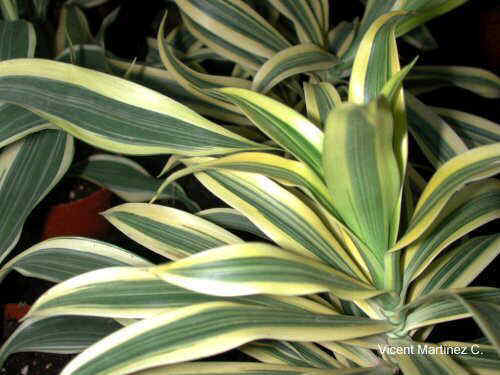Contents
What is a kava plant?
Characteristics of kava (Piper methyscum)
The word Kava means “bitter” in the Kingdom of Tonga.
Scientific name: Piper methyscum Forster.
Etymology: Piper comes from the Greek pipperi, name of the pepper. Methyscum comes from Latin and means “intoxicating”: “intoxicating pepper”.
Taxonomic synonym: Piper wichmanni.
Family: Piperaceae.
Habitat: plant from the same family than black pepper (Piper nigrum) native to the islands of the Pacific Ocean.
| Kava is a plant native to the South Pacific, where it is known as a medicine for its relaxing properties. |
Botanical description of Kava
Kava is a perennial shrub or small tree of the same family as pepper (Piper spp.), It can grow between 1-5 meters tall.
It stem is erect, strong, thick, green and articulated with pronounced nodes, resembling the structure of bamboo. The stems are divided into two, which is called dichotomous. We have the aerial stems and the rhizomes or underground stems. The rhizomes of kava are grown to be dried and to be used for medicinal purposes. The rhizome color varies from white to dark yellow, depending on their content in active ingredients (kavalactones).
Its leaves are dark green, alternate, petiolated and cordate; between 12 and 20 cm long.
Kava is a sterile plant, therefore it must be reproduced vegetatively. Any kava plant is found in the wild, no matter the remote site where we find a copy, it was placed there at the time by a man. This is because the plants of the genus Piper have variations between the number of chromosomes. Methyscum Piper has a high level of ploidy in their chromosomes, which could explain their sterility.
The inflorescence is a very short flower spike that comes from the base of the leaf petioles.
Historically, this plant has been used in rituals and popular celebrations for its calming effects and to stimulate sociability. To this end, they use their rhizomes, with bitter and spicy taste, which are typically taken in drink or chew sometimes.

In the image: botanical illustration of Kava
Composition of Kava
– Minerals: potassium, calcium, magnesium, sodium, aluminum, iron.
– Phytosterols: flavokawins A, B and C.
– Kavalactones: kawain, methysticin,, yangonin, dihydromethysticin 5.6-, 7.8-dihydrokawain, demethoxyyangonin, dimethoxydihidrokawain 11.12-, 11-hydroxy-12-metoxidihidrokawain, 11-metoxinoryangonin, 11-metoxiyangonin, 2 ‘, 4’ -dimethylchalconaringenin, 5,6,7,8-tetrahydroyangonin, 5-dihydroyangonin, desmethoxyyangonin,, dihydrokawain-5-ol.
– Alkaloids: Pipermethystine
Kavalactones from Kava
Kavapyrones or kavalactones are a type of lactones found in the kava plant (Piper methyscum). They are responsible for the medicinal properties associated with the plant.
These compounds are composed of 13 carbon atoms, 6 of which form a benzene ring which in turn is joined by a double bond to an unsaturated lactone. These substances are water insoluble and non-polar. They are extracted by organic solvents of the resin of some plants (rhizomes and seeds).
Kavalactones are extracted only from two plants in nature: Piper methyscum and Piper wichmanni, the last one being considered a primitive species of the first.
Kava plant (Piper methyscum) contains 15 kavalactones in composition, although among these seven types of kavalactones stand out which are associated with the therapeutic action of the plant because they are present in higher percentage. In order from highest to lowest content, these kavalactones are:
– Kawain: the most abundant kavalactone.
– 7.8-dihydrokawain
– Methysticin
– Demethoxyyangonin
– Yangonin
– 5.6-dihydromethyscin
– 5.6-dehydrokawain
Piper wichmanni is considered a primitive plant of P. methyscum and the only one that shares the content of kava kava lactones, containing a high percentage of dihydromethyscin and dihydrokawain, which favors nausea and severe effects.
Kawain is the most therapeutic type of Kavalactone. the less appreciated for their severe effects are the dihydro derivative, as dihydromethyscin. It is desired for a kava cultivar with medicinal purposes to possesses a high amount of kawain and a low percentage of dihydromethyscin in their rhizomes.
Kava lactones are found in all parts of the plant (5%) but, for medicinal purposes, roots and rhizomes must be used, because they have higher concentrations of active compounds (15%). It is also reported the use of the seeds of the plant for medical purposes
![]() More information about Kava properties and other types of peppers.
More information about Kava properties and other types of peppers.
| Botanical classification | |
| Kingdom | Plantae |
| Subkingdom | Tracheobionta Vascular plants |
| Superdivision | Spermatophyta Seed plants |
| Division | Magnoliophyta Flower plants |
| Class | Magnoliopsida Dicotyledons |
| Order | Piperales |
| Family | Piperaceae |
| Gender | Piper |
| Species | Piper methyscum |
![]() More information about Kava properties and other types of peppers.
More information about Kava properties and other types of peppers.








